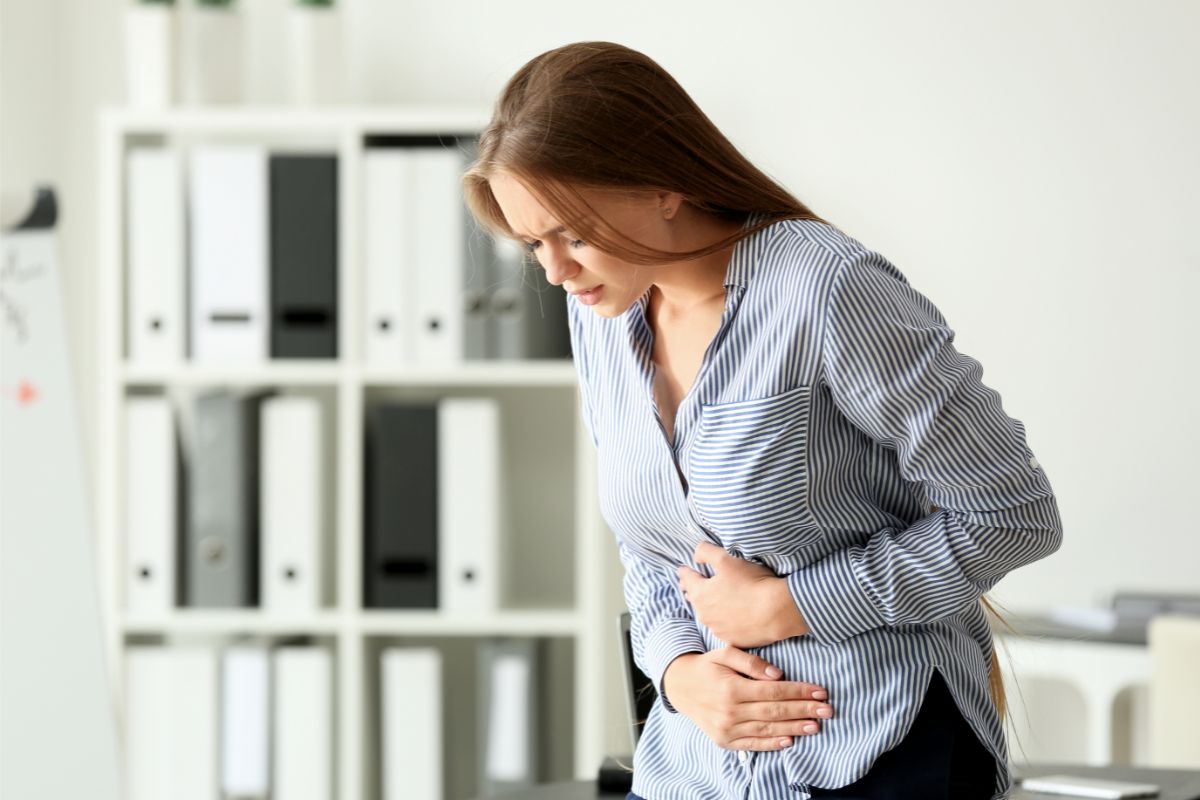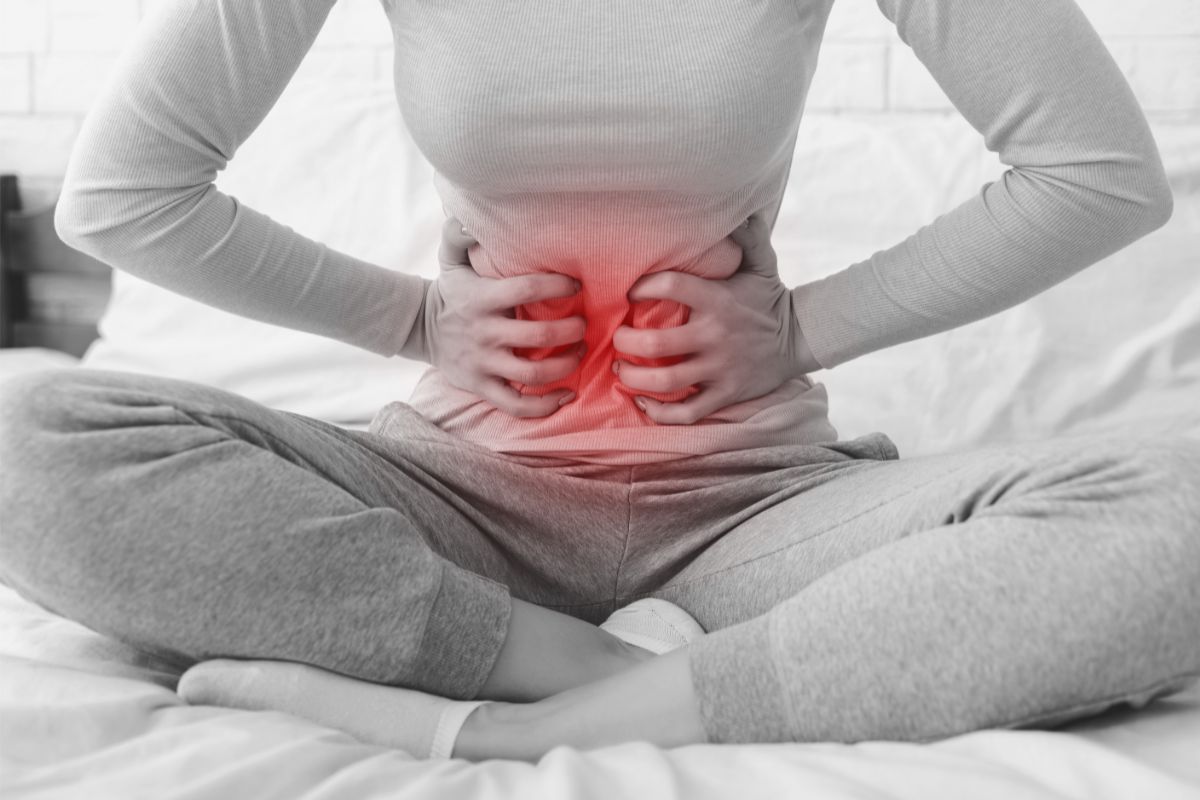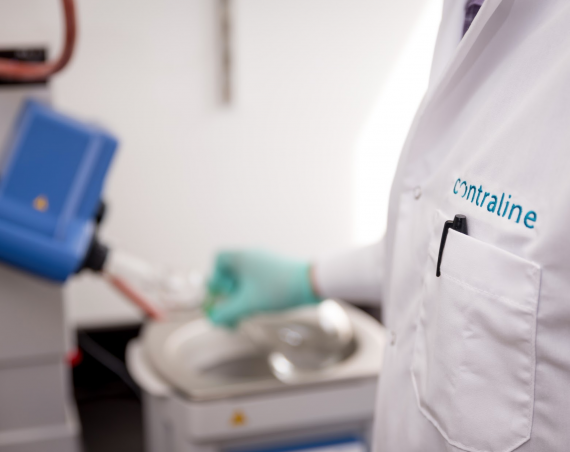As anyone who has the ability to ovulate will understand, menstruation isn’t easy. It might be a completely natural process that we have to endure on a monthly basis, but periods can be heavy, exhausting, expensive, and above all, painful
. It’s not just the period cycle that can be painful, however – some experience pain during the ovulation stage.

If you’ve always had ovulation pain, you’ve probably spent years of your life researching why the pain is so excruciating, talking to countless doctors who don’t have an answer for you.
Even if you’re only now experiencing pain that isn’t normal to your usual period cycle, it can be scary not knowing what’s wrong with your body.
Truth is, it’s normal to experience some discomfort during the ovulation period – but it’s always worth making sure the pain isn’t an indicator of a serious health issue.
Here is everything to know about ovulation pain, including what’s normal and what’s not.
What Is The Ovulation Phase?
Firstly, let’s take a look at what the ovulation phase actually is.
Ovulation is a phase of the menstrual cycle that typically occurs around two weeks before the menstrual period has begun.
This phase is where the ovary releases a mature egg, or an ovum. The ovum moves down the fallopian tube to the uterus, where it remains in preparation to be fertilized by sperm, with the aim to make a fetus.
As expected, the ovulation phase is the best time in a menstrual cycle to get pregnant. It generally occurs on day 14 of a 28-day cycle and lasts around 24 hours.
The egg will die or dissolve if it isn’t fertilized within these 24 hours. When the egg isn’t fertilized, this results in the actual period itself.
What Happens In The Ovulation Phase?
The ovulation phase only lasts for 24 hours (give or take), but it does come with some physical side effects. The most common symptoms of ovulation are:
- Thicker discharge
- Rise in basal body temperature
Discharge is a completely normal part of having a uterus. If you’ve ever gone to the toilet and looked down to see something that resembles egg whites in your underwear, this is probably an indicator of ovulation.
The reason why discharge occurs during this phase is because of the estrogen peak. The hormone estrogen peaks before ovulation, resulting in cervical mucus.
This mucus is intended to make it easier for sperm to swim through the vagina and into the uterus to fertilize the egg.
It’s also normal to have an increase in basal body temperature during ovulation. This is due to increased levels of progesterone, which is a hormone that prepares the lining of the uterus for a fertilized egg to grow.
A side effect of the release of this hormone is increased body temperature, resulting in hot flashes and clammy skin.
What’s Normal During Ovulation?
If you’re looking for some peace of mind, let’s take a look at what you can expect to happen to your body during ovulation – aside from discharge and increased body temperature.
Flushed Appearance
Alongside the increase in body temperature comes a flushed appearance. This is a normal response to a peak in basal body temperature, resulting in redness in the face and generally clammy skin. Individuals might also experience reddened chests and arms.
Not only this, but a flushed appearance can result in a rosy complexion, which actually has its own biological reasoning (aside from increased body temperature).
According to scientific research, men are more likely to be attracted to women when they are ovulating, due to the rosy glow. This makes sense given that this phase is when women are most fertile.
Increased Sex Drive
When you’re ovulating, your body’s natural reaction is to increase its libido. This is simply your body’s way of telling you that your egg is in position and ready to become fertilized.
Unless you’re on a form of contraception, it’s best to avoid these urges if you aren’t looking to become pregnant.
Tender Breasts
It’s common for women to experience tender breasts during ovulation. This occurs in more women than you’d might think, as it’s your body’s way of preparing for fertilization and pregnancy.
Sometimes, the breast pain can last for longer than the ovulation phase, carrying through to the PMS stage.
Is It Normal To Feel Pain While Ovulating?
Generally speaking, it is quite normal to feel pain while ovulating. In fact, one in five women experience varying degrees of pain during ovulation, lasting from either a few minutes to two days.
In most cases, pain during ovulation is usually harmless. This is especially true if you only ever feel pain during ovulation and during your period.
If it’s a pain that you’re used to, and a pain that you can deal with, then it shouldn’t be a cause for concern.
However, pain during ovulation can be an indicator of serious medical conditions, such as endometriosis. The general rule is to always contact a healthcare professional after three or more days of ovulation pain.
This is especially true if you are experiencing other symptoms that aren’t normal to your usual menstruation cycle, such as heavy bleeding before your period.
So, it’s important to understand what is normal and abnormal for your body. At the end of the day, only you know what pain is normal for you.

What Causes Ovulation Pain?
Unfortunately, there isn’t an exact answer to why some people experience pain during ovulation. This remains to be an unknown and under-researched part of the menstruation cycle.
However, we can assume that the notion of ovulation is what causes pain and discomfort. This can include pain from the egg being released from the sac that contains the egg, known as the mature follicle.
It can also be caused by the swelling of the surface of the ovary before the egg is released.
When Is Ovulation Pain Not Normal?
So, now we know that some levels of discomfort are somewhat normal during ovulation, but that doesn’t mean that it should always be ignored.
There are times when ovulation pain is an indicator of something potentially serious, such as endometriosis, pelvic inflammatory disease, or appendicitis.
If you experience severe pain in the lower abdomen during every ovulation phase, you’ll need to talk to your doctor.
They will conduct a physical examination based on your medical history, which can include blood tests, an abdominal ultrasound, a vaginal ultrasound, swabs from the cervix, and even exploratory surgery.
Let’s take a look at the medical issues that ovulation pain might be a result of.
Endometriosis
Endometriosis, shortened to endo, is a disease wherein tissue (similar to the tissue lining the uterus) grows outside the uterus.
This results in difficulty getting pregnant and severe pain. Endometriosis affects around 10% of people who menstruate around the world, though this figure is believed to be much higher.
Unfortunately, due to lack of funding and research, endometriosis is still largely unknown by the scientific community.
It can be notoriously difficult to get a diagnosis for endo, as the pain can so easily be mistaken for bad period pains.
Currently, there is no cure for endometriosis. Instead, there are treatment plans and surgeries available to control the symptoms.
This is why it’s so important to get an early diagnosis – though this is still difficult in most places.
There are several symptoms of endometriosis, including:
- Difficult getting pregnant
- Pain during period
- Pain during or after sex
- Pain when urinating/defecating
- Heavy bleeding during and between periods
- Bloating
- Nausea
- Depression or anxiety
- Fatigue
- Chronic pelvic pain
Some people will experience only a few of these symptoms, while others will tick every box. Each case of endometriosis is unique to the individual, and some might even experience symptoms not on this list.
This is why individuals aren’t often aware that they have endometriosis, making it difficult for healthcare providers to diagnose it.
If you experience extreme pain during ovulation that lasts longer than 3 days, then you’ll need to speak to a doctor. This is especially important if you recognize the above symptoms that are indicators of endometriosis.
Pelvic Inflammatory Disease
Pelvic inflammatory disease, known as PID, is where the female reproductive system is infected, including the fallopian tubes, ovaries, and womb.
In most cases, pelvic inflammatory disease is caused by a bacterial infection that starts at the vagina or cervix and works its way upwards.
The bacterial infection can be caused by a sexually transmitted infection, such as gonorrhea, chlamydia, or mycoplasma genitalium. Otherwise, PID is caused by bacteria that is found normally in the vagina.
The symptoms of pelvic inflammatory disease are usually quite mild, and it’s rare that someone will experience every symptom. The most common symptoms of PID include:
- Pelvic pain / pain in the lower abdomen
- Bleeding between periods
- Bleeding after sex
- Discomfort in the pelvis during sex
- Heavy and painful periods
- Pain while urinating
- Unusual vaginal discharge (green, yellow, or foul-smelling)
- High temperature
- Nausea
If you experience any of these symptoms out of nowhere during your ovulation phase, you should seek help from a doctor. You might have to seek urgent medical attention if the pain is severe.
The key is to get PID diagnosed as early as possible. The diagnosis is generally based on symptoms and an internal vaginal examination. Without an early diagnosis, this can result in serious and long-term issues.
It’s also good to get a diagnosis of PID to rule out the possibility of endometriosis. Of course, if you experience all of these symptoms and treatments for PID aren’t helping, you might have been misdiagnosed, and you should seek help for potential endometriosis.

Appendicitis
In some cases, you might experience ovulation pain because you have undiagnosed appendicitis. This is where the appendix – a small pouch connected to the large intestine – swells and becomes very painful.
There isn’t any information on what the appendix does, but when it becomes inflamed, it can be removed without harm.
The pain of appendicitis usually starts in the abdomen, and will come and go over the course of several days or weeks. Then, the pain travels to the lower right-hand side, and becomes more severe.
The location of the appendix pain is not too far from where people feel discomfort and pain during ovulation and periods.
So, if you’re not used to ovulation pain, and if it lingers for more than a few days, this could be a sign of appendicitis.
If you suspect that you might have appendicitis, you’ll need to contact a doctor immediately. This is especially important if the pain becomes incredibly severe and spreads across your abdomen, wherein you’ll need to get to the Emergency Room immediately.
How To Manage Ovulation Pain
If you don’t believe your ovulation pain is an indication of any serious medical condition, then you’ll be relieved to know that there are ways to relieve your discomfort.
Keep in mind that these tips won’t work for everyone, so if you are dealing with ovulation pain, try to treat it like you normally would with period pain.
Firstly, try to deal with the pain without taking medication. Something as simple as a warm bath or hot water bottle can help to relieve discomfort while ovulating.
Make sure to drink lots of water, take deep breaths, and go for a small walk if you can.
Just like with period pains, a slow walk can help to relieve any pain or discomfort.
If the pain is still there, you can take pain relief medication, such as ibuprofen or paracetamol. Make sure to only take these medications if they don’t interact with any medications you might already take.
Lastly, if you struggle with ovulation pain on a regular basis, you can stop ovulation with a form of contraception. There are lots of types of hormonal and non-hormonal contraceptives available, including the contraceptive pill, the coil, and the implant.
It might take a while to find the right option for you, but if you don’t want to get pregnant, and if you want to stop the pain of ovulation, this can help massively.
When To See A Doctor
You should see a doctor when you experience more than three days of ovulation pain, or if your symptoms match the symptoms of conditions such as endometriosis.
Also, if anything seems unusual to your cycle (such as abnormal heavy bleeding or discharge), seek professional help immediately.
Summary
So, there you have it! Ovulation pain isn’t necessarily abnormal, but it’s important to understand what pain feels normal to your body.
Hopefully, this guide has given you some peace of mind, or some reassurance that your pain is valid and needs to be taken care of.



